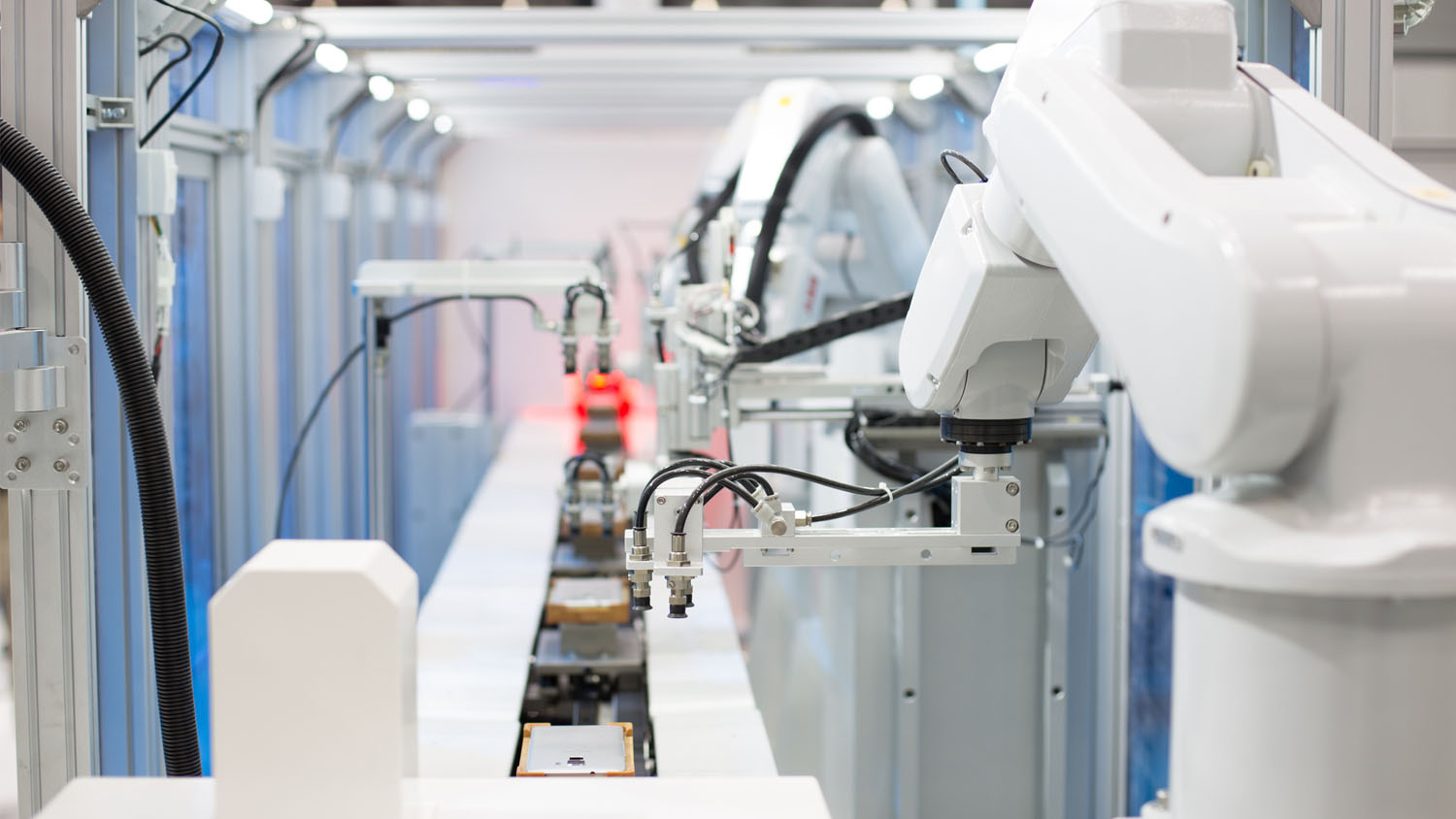Forging an Ecosystem for Advanced Manufacturing Innovation
Fri, 01/21/2022 - 12:00
At the Deep Tech Summit, SGInnovate brought together industry leaders from the Advanced Manufacturing (AM) sector to discuss innovation opportunities and the need to foster a more supportive environment for AM development. In this blog, we cover three avenues that the sector can focus on to encourage widespread technological adoption.
Advanced manufacturing (AM) technologies such as robotics and 3D printing give manufacturers access to value-added benefits through versatile and efficient production, but the adoption of such technologies is still hindered by the large financial investments needed and difficulties with engineering and maintenance.
As Singapore eyes growth of 50 per cent in the manufacturing sector over the coming decade, building up the country’s AM ecosystem will be pivotal to achieving this economic target. Highlighting what the sector needs to progress to the next stage, industry leaders and key stakeholders at the executive roundtable Advancing Additive Manufacturing Innovations and Startups, presented by SGInnovate and the National Additive Manufacturing Innovation Cluster (NAMIC) in partnership with Enterprise Singapore, during the Deep Tech Summit, outlined key areas where more work is needed to encourage innovation in Singapore’s AM ecosystem.
Sparking action across the entire value chain
By spurring disruptive digital transformation, AM offers enticing benefits for businesses looking to gain a competitive advantage and adopt more cost-efficient production systems. However, the risks associated with AM can be just as daunting, especially to smaller enterprises that may not have the resources necessary to purchase or develop such technologies.
Stakeholders at every stage of the manufacturing ecosystem will need to be convinced of the value that AM brings, as well as to take on these risks. To empower more companies to venture into AM, extensive financial and regulatory support will be key to incentivising the adoption of AM solutions.
For individual manufacturers, certifications from regulatory bodies for their AM technologies would aid in aligning with clients for varying products and technical specifications. These guidelines can cover system performance and reliability, factory acceptance criteria and quality control checks for the final product — laying the groundwork for regulatory decision-making and investment guidance. One example is the medical device sector, where products undergo rigorous testing before reaching patients. With 3D printing emerging to design point-of-care solutions, AM-specific certification guidelines are needed to vet the quality and safety of the produced devices.
As an initial step towards standardisation, Singapore developed the Smart Industry Readiness Index to help companies assess the readiness of their facilities and human capital as they initiate and scale their AM transformation initiatives.
To further encourage manufacturers to experiment with new technologies, this transformation roadmap needs to extend and engage other parts of the manufacturing value chain, from emerging AM vendors to regulatory bodies, and even to eventual buyers of products built through AM technologies.
Redesigning supply chains to support digitalisation
AM technologies provide increased precision and customisation over traditional manufacturing techniques, achieving unique properties from joint-like flexibility in robotic hands to highly efficient filters with uniformly-sized pores. In bioprinting, for example, the artificial tissues and organs not only emulate the functions of human tissue but are also compatible with the body.
Beyond an improved final product, companies and other industry stakeholders should recognise AM’s value as an important complement for different stages along the production pipeline. By introducing a rethink to design, it can enable sustainable and local manufacturing of complicated parts in industries that carry products requiring extensive customisation of components, such as the healthcare, electronics or aerospace sectors.
For instance, moulding components into a desired shape tends to involve a lot of waste, but vendors can directly produce components that already have complex geometries similar to the final product through additive manufacturing. By making current small-scale manufacturing more cost-efficient and standardised, AM technologies help scale up capabilities to meet a wider range of demands so that more stages of the supply chain can be localised.
However, current manufacturing models that rely on centralised factories may not be suitable for AM approaches. With the production chains all leading to one facility, introducing new, high-risk technologies can be costly.
Instead, decentralised models may allow for easier digitalisation, so companies can focus on enhancing the design process without driving up resource costs considerably. By distributing component development across separate sites, large companies can collaborate with AM startups while reducing the interdependence of each segment in the production pipeline.
Developing a specialised talent pool
Finally, the growth of the AM sector is reliant on a workforce that has the skills to spearhead innovation. Given the highly technical nature of AM, individuals will need to acquire specialised competencies in areas such as 3D modelling, computer-aided design and data analytics. The diverse verticals that AM can serve also underlie the need to integrate expertise from various domains such as biomedicine, chemical engineering and aerospace.
To enable talent to adapt and contribute to these technological shifts, it would be critical to ensure that the majority of workers Singapore’s manufacturing sector – which currently employs about 472,000 individuals – are able to upskill to meet these new needs. Professional development initiatives will be a crucial tool to train current personnel for AM-specific capabilities, and provide fresh graduates or career switchers entryways into the sector.
In particular, apprenticeship programmes will need to be designed such that budding manufacturers are given the opportunity to work directly with cutting-edge technologies and veteran industry leaders. By creating a space for on-site immersion, companies encourage talent training and learning by experience, ideally leading to new ideas and accelerated innovation.
With access to the right training and development opportunities, the AM sector will benefit from cost-efficiency and higher productivity, with creative and skilled teams delivering intellectual property (IP) to elevate value further.
Creating a thriving AM ecosystem
Whether governments or industry leaders, every player can provide different resources and contribute to shaping the AM ecosystem — offering capabilities for design thinking courses or funding for precision engineering facilities. A culture of Open Innovation can accelerate the sector’s growth further by increasing access to novel manufacturing approaches and emerging technologies through greater startup-corporate collaboration.
Singapore’s strong foundation in manufacturing began over 50 years ago when the city-state saw the need to advance technologically and invest in research and development. Singapore continues to be a pioneer in the field, with AM as the next chapter in its ongoing evolution. The widespread adoption of AM will emerge as the central engine to revamp industries and overcome big challenges such as sustainability and supply chain management — further bolstering the economy while delivering societal impact.
Trending Posts
- Keeping satellites safe: How CYSAT Asia 2026 is tackling space cybersecurity
- The future of fusion energy: What will it take to bring the power of the stars to earth?
- How an aerospace engineer charted a path to quantum technology
- Scaling nanomaterials is challenging — Meet the startup with a hybrid solution
- Surveying Singapore's early-stage emerging tech startup landscape






